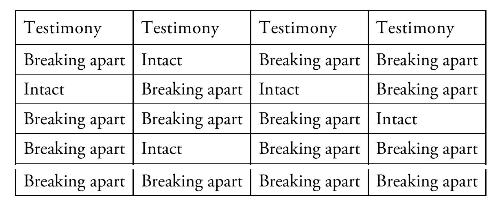Historians are interested in the accuracy of eyewitness accounts of traumatic events. One study examined survivors' recall
Question:
Historians are interested in the accuracy of eyewitness accounts of traumatic events. One study examined survivors' recall of the sinking of the ship Titanic (Riniolo, Koledin, Drakulic, \& Payne, 2003). The researchers reviewed the transcripts of survivors' testimony at governmental hearings (www.titanicinquiry.org) to see whether they testified that the ship was intact or breaking apart during the ship's final plunge (it was in fact breaking apart). Listed below is the testimony of 20 survivors:

To test the hypothesis that survivors were able to accurately recall the state of the ship at the time of the final plunge, conduct the chi-square goodness-of-fit test for these data (assume there was an equal likelihood of saying the ship was intact or breaking apart).
a. State the null and alternative hypotheses \(\left(\mathrm{H}_{0}\right.\) and \(\left.\mathrm{H}_{1}\right)\).
b. Make a decision about the null hypothesis.
1, Calculate the degrees of freedom \((d f)\).
2, Set alpha (a), identify the critical value, and state a decision rule.
3, Calculate a statistic: chi-square \(\left(X^{2}\right)\).
4, Make a decision whether to reject the null hypothesis.
5, Determine the level of significance.
6, Calculate a measure of effect size (Cramér's \(\varphi\) ).
c. Draw a conclusion from the analysis.
d. Relate the result of the analysis to the research hypothesis.
Step by Step Answer:

Fundamental Statistics For The Social And Behavioral Sciences
ISBN: 9781483318790
1st Edition
Authors: Howard T. Tokunaga




